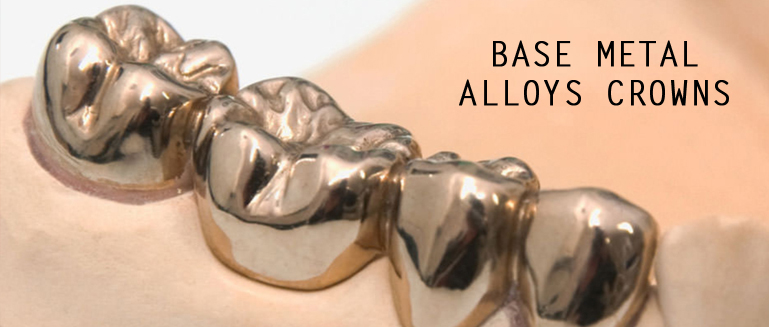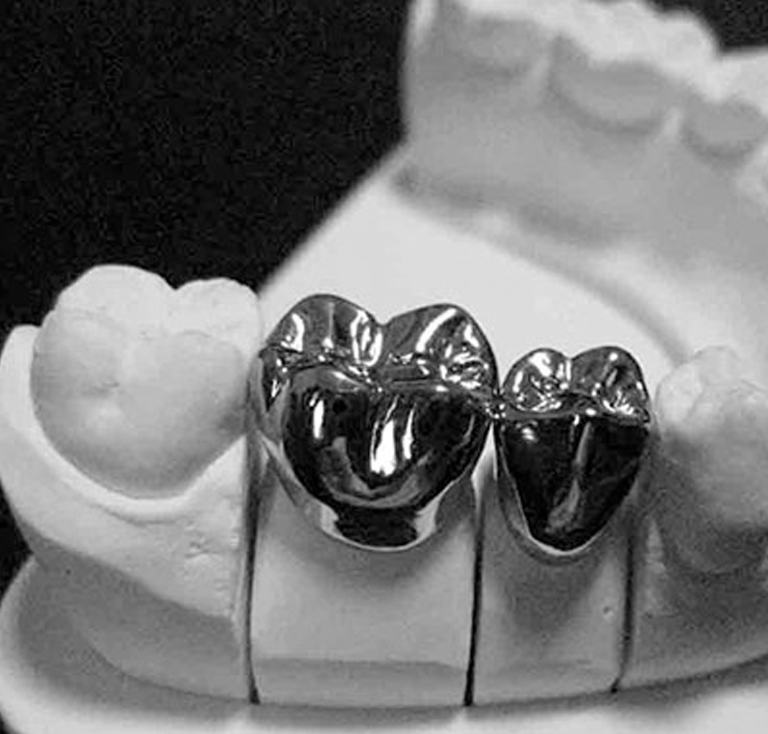Base Metal Alloy
The term “crown” describes the portion of your tooth from the gum line up (or down) – in other words, the portion of the tooth that can be seen in a healthy mouth. It is also used more colloquially to describe the dental procedure of having a prosthetic “crown” (also called a “cap”) placed over a decayed, chipped, cracked, or otherwise damaged tooth.
When the prosthetic crown is constructed predominately of base metal, it is designated as such because less than 25% of its composition is of the “noble” metals: gold, platinum, palladium, and silver, and its predominant makeup is of chromium and nickel. Patients with allergies to metals may not tolerate these as well as Gold, which has a composition that is over 60% noble metal, of which more than 40% must be gold. Gold is more bio-compatible than base metals, and is resistant to corrosion and oxidation better than other metals.


